Vermont was settled later than most of New England, in the late 1700s by people from Connecticut, Massachusetts, and Rhode Island. Pioneers, attracted by cheap land. You could cut down all the trees and raise sheep, and the rivers provided endless power for mills. Woolen mills, stone-cutting marble and granite mills, lumber mills, etc. You could transport stuff down the rivers to the big Connecticut River.
They did cut down all the trees: by 1850 most of Vermont was denuded of forest, whether for lumber, grazing, charcoal, or firewood.
(In the 1700s, Vermont was considered part of the New York colony, but New Hampshire had claims on it. For a few decades, Vermont was the independent Republic of Vermont until they joined the union in 1792.)
After producing the woolen garments for World War 1, Vermont's mills slowly closed down, the Vermont wool biz (Big Wool moved west) dried up and was replaced by dairy for the distant cities when the trains came through. Now, with factory dairy, there isn't even much of that any more, and the trees have grown back (and so have the Moose, Black Bear, and White-Tailed Deer). The milk cows today spend all day in sheds until their productivity drops and they are turned into Mcdonalds burgers.
The wealth evident in the fine houses built in Woodstock from roughly 1800-1840 (replacing shacks, log cabins, and other humble dwellings) was a combination of its being a Shire town - a county seat with court and jail and lawyers - and the woolen mills. Those businesses attracted tradesmen and farmers, roads spread out, and the town thrived for a while. In 1830, this town of 3000 souls (then, and 3000 now!) had five newspapers.
Today, Woodstock is all about tourism, with endless interesting summer and winter events, and skiing, of course, in the winter. The village is preserved in amber by a fierce architectural review board and its designation as a National Historic District. Laurence Rockefeller had a lot to do with that (his Woodstock home is among the photos below the fold).
And, today, Vermont has the distinction of having the lowest per capita income in the US, having surpassed Mississippi a few years ago. The poorer they get, the further to the Left they move. It is not rational and it is utterly self-created (taxes and regs) and self-defeating, but it's a free country and, here at Maggie's Farm, we value the freedom of people to do stupid things if they want to. (I just hate it when people make obviously predictable mistakes on my nickel.)
The Wiki on Woodstock, VT here. Worth a visit. Bring camera.
I took the photos below early on Saturday morning. The temp was 48 degrees F at 5:30 when I typically go out to begin my exploring of a place (hence no people around in some of my photos). By mid-day, the temp got up to a balmy global warming crisis of 73 degrees.
I offer no architectural comments on the details of these structures. I don't have the time, and I lack the eye for detail that Mrs. BD has. My brain tends towards weight, balance, harmony, and emotional comfort - and only notices detail when it intrudes. However, I do know and believe that God is in the details. More on that later (maybe).
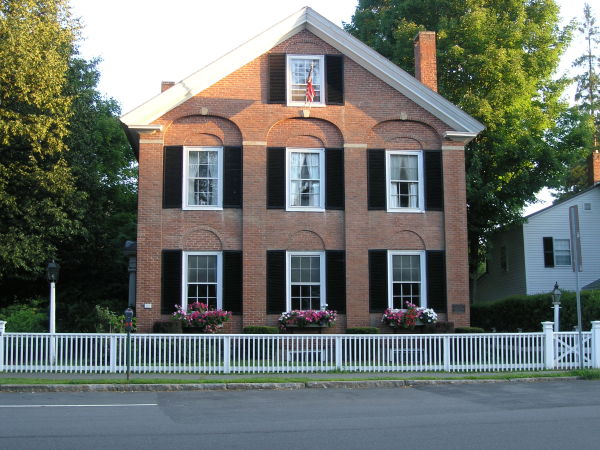
Many fun photos below the fold. All of these buildings are in town -
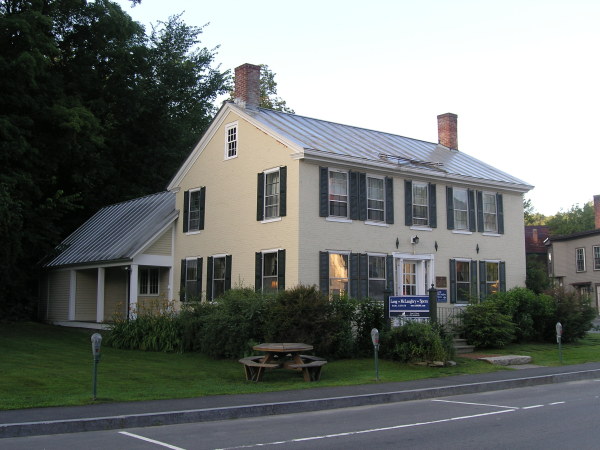
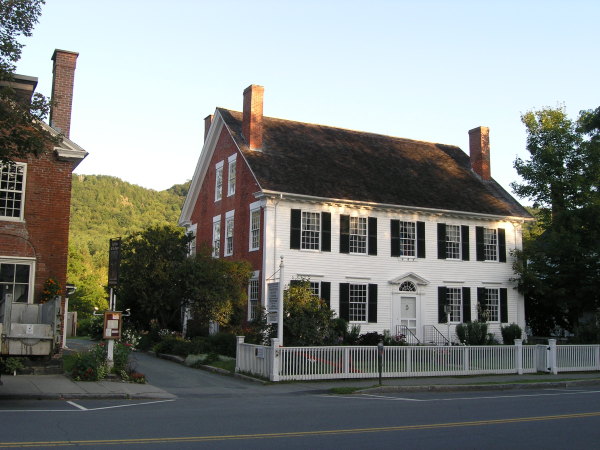
An old mill by a stream and a WPA bridge:
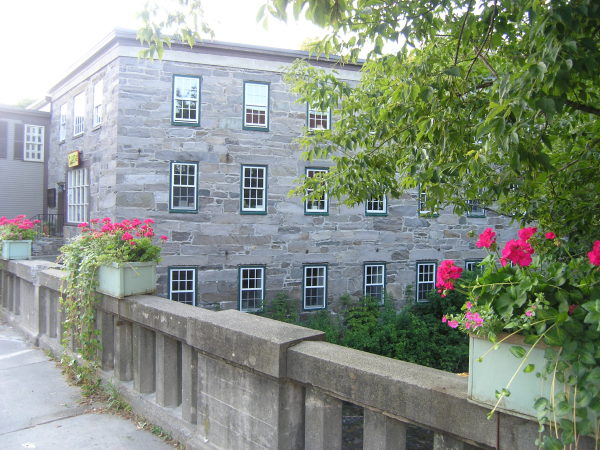
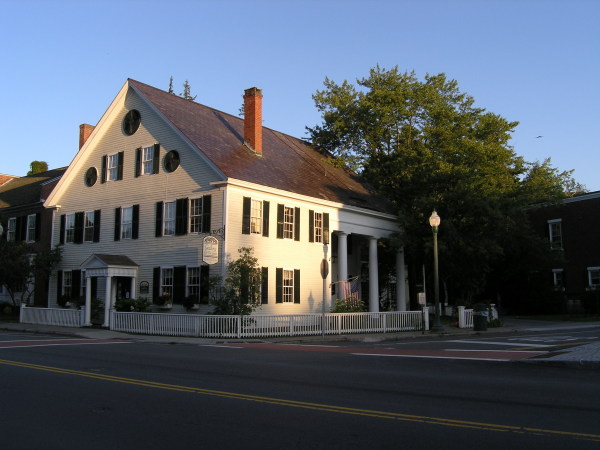
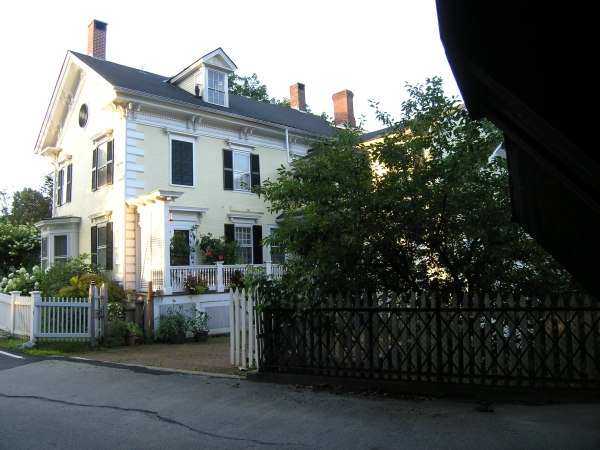

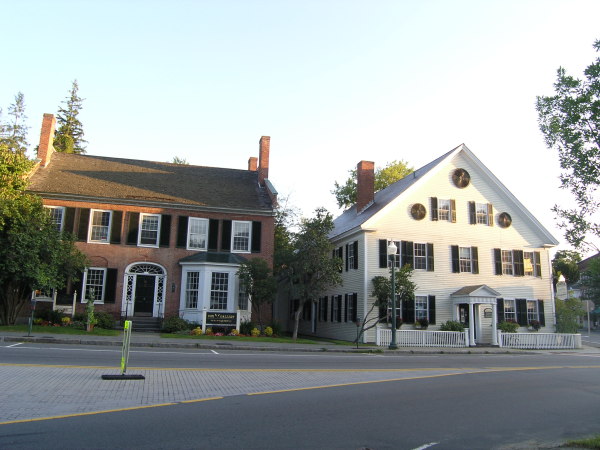
There are a few Victorians scattered around from a later era. Not too many, though, and these wedding cake dwellings hurt my eyes:
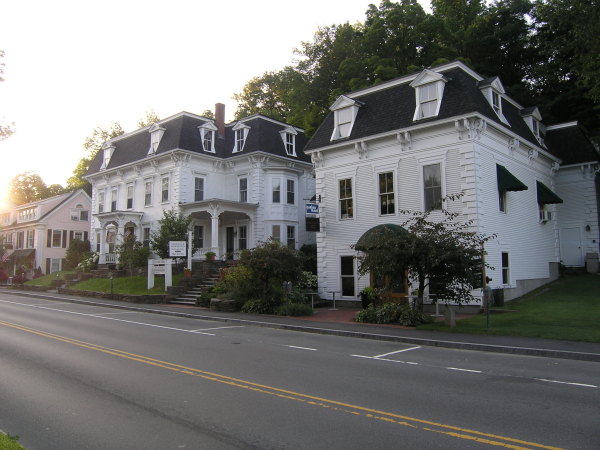
The core of the main drag, as in most small towns in America, was replaced between the late 1800s and WW1 with brick or stone store and office blocks. They were the modern malls of their time. Before that, the core downtowns were mostly shops, craftsmen, professionals and tradesmen who lived above the shop: shoemakers, cabinetmakers, doctors, barber/surgeon/dentists, harnessmakers, lawyers, wheelwrights, mechanics, blacksmiths, candlemakers, booksellers, tobacconists, wagon-makers, etc., etc.
These "new" blocks look about the same everywhere in America. Suburbanization, cars, strip malls, big box stores, etc have made them obsolete in many - but not all - towns today. Definitely not in change-phobic Vermont...except for hopey-changey Obama change. Don't ask me what they want except other peoples' money. They do not want WalMart or Costco or anything else that brings jobs and business. Vermont, sad to say, lives in a fairy tale supported by out of state tourist dollars and federal "generosity." A welfare pixie-dust State, for certain, living off the fat of the rest of the nation.
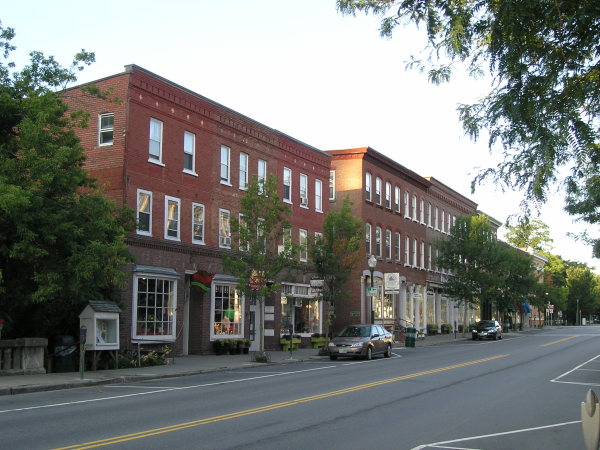
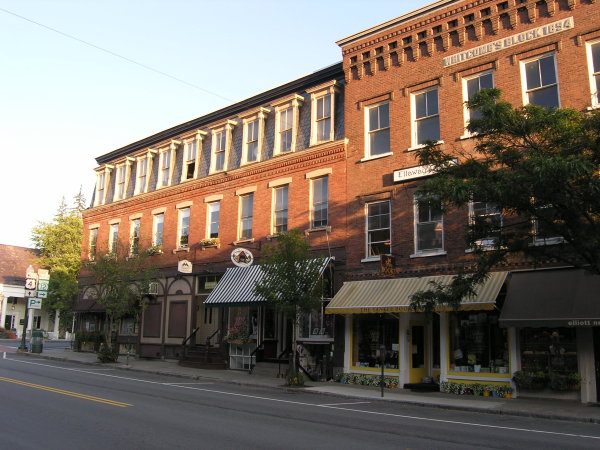
Gillingham's General Store, in the same family for over 100 years. The current Gillingham was changing the lightbulbs when we were there. That's what proprietors do: they do it all themselves, in the end. A nation of shopkeepers (and farmers), thank goodness.
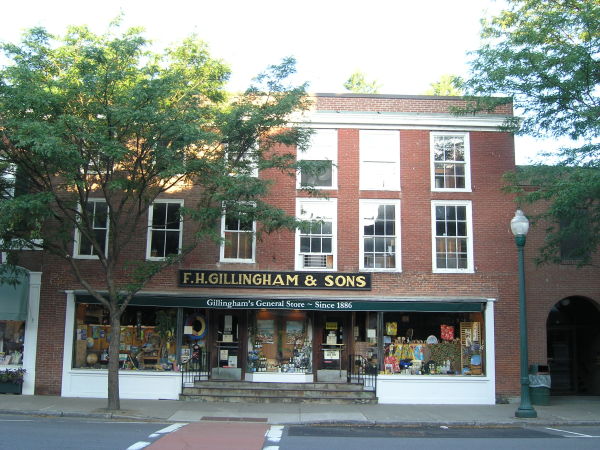
An 1820 duplex on the Green. The side addition, no doubt, for a child's family in the family business.
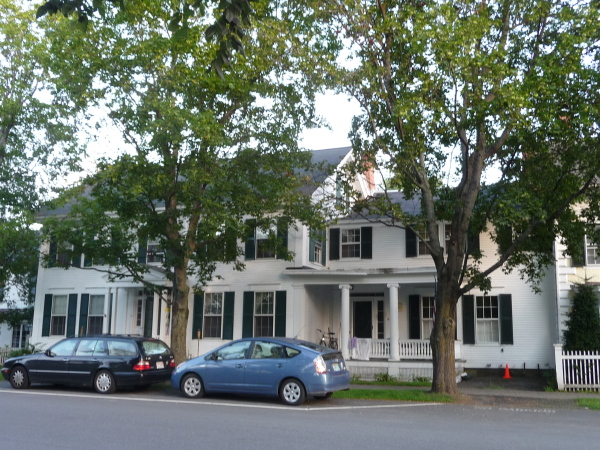
Another one, also on the Green:
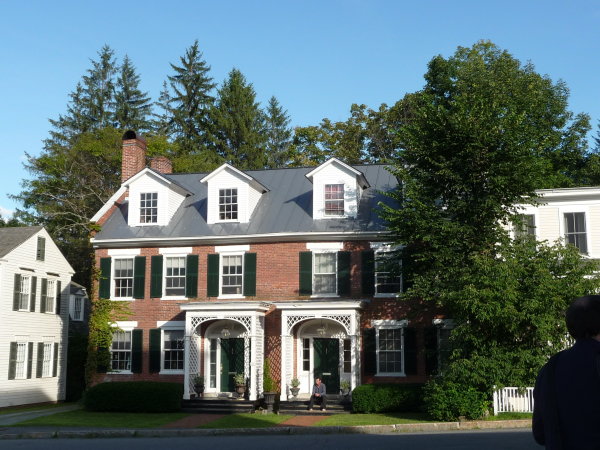
An 1810 brick Cape:
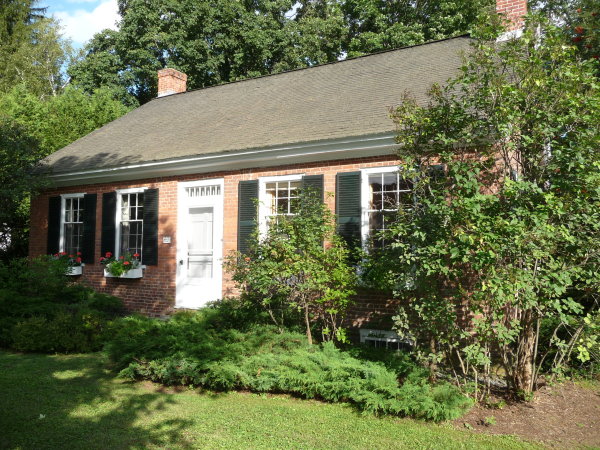
From around 1790, in the old style:
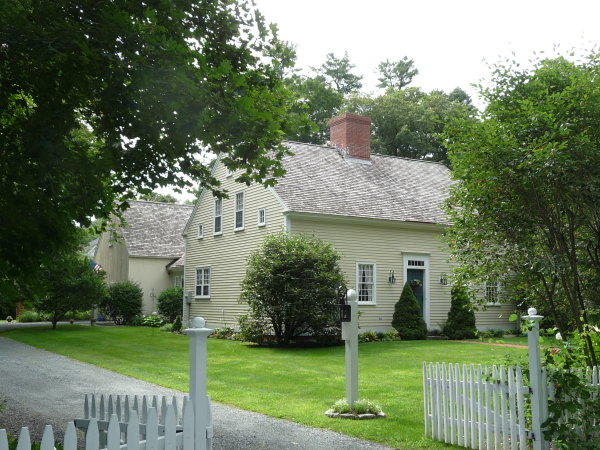
More, better photos later, as I organize my stash of pics -


If you missed Part 1, it's here (with a little bit of Vermont history). In the early 1800s, few towns had architects. They did have builders. And they had Pattern Books. Pattern books were like blueprints, produced by well-known or entrepren
Tracked: Aug 13, 13:02